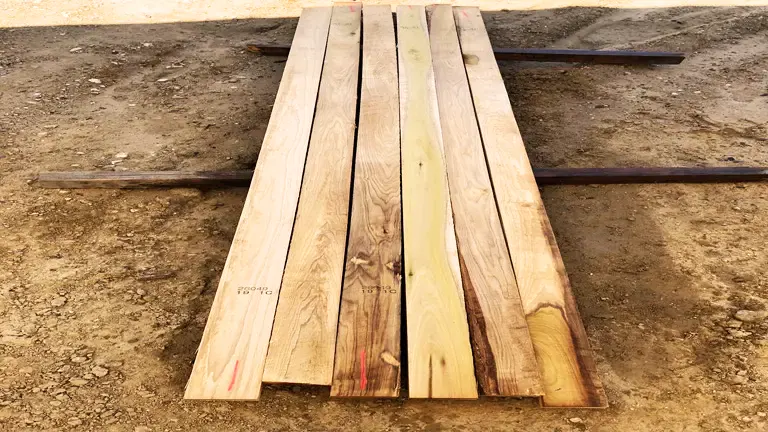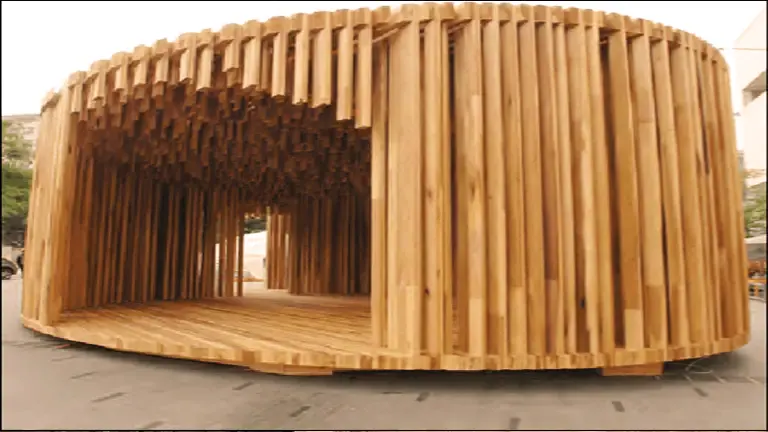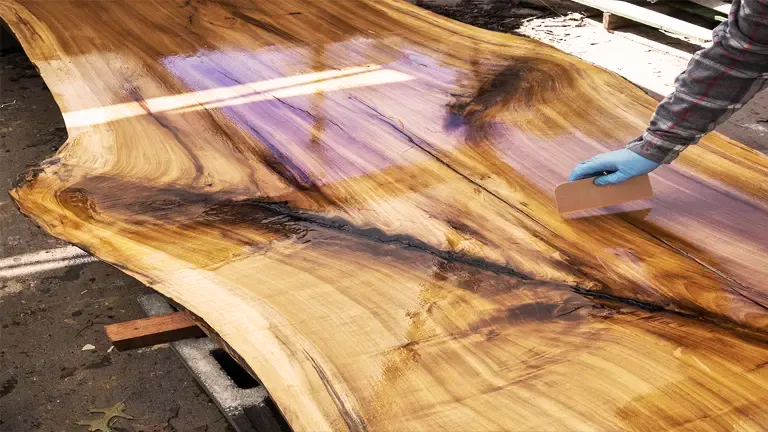Tulipwood Yellow Poplar Lumber
- July 31, 2023
- 0 comment
Tulipwood Yellow Poplar lumber, scientifically known as Liriodendron tulipifera, stands as a highly sought-after hardwood due to its exceptional versatility and widespread use in diverse woodworking and construction projects. However, it is important to note that despite sharing a common name, this species is distinct from the true tulipwood found in tropical regions.

Native to eastern North America, the Tulipwood Yellow Poplar thrives throughout the United States and parts of Canada, making it easily accessible for both commercial and domestic use. A key attribute contributing to its popularity is its rapid growth rate, rendering it a renewable and sustainable resource that aligns well with environmentally conscious practices.
Renowned for its favorable qualities in woodworking, Tulipwood Yellow Poplar presents a fine and uniform grain pattern, coupled with a moderate texture, making it an ideal choice for crafting furniture, cabinetry, and interior millwork. Additionally, this hardwood boasts a pleasing color spectrum that ranges from light yellow to pale olive green, further enhancing its aesthetic appeal. With its ease of workability and compatibility with various finishes and glues, artisans and craftsmen often favor Tulipwood Yellow Poplar for an assortment of projects.
| Common Name(s) | Tulipwood Yellow Poplar, Tulip Poplar |
|---|---|
| Scientific Name | Liriodendron tulipifera |
| Distribution | Eastern North America |
| Tree Size | Height: 70-100 ft (21-30 m); Diameter: 2-5 ft (0.6-1.5 m) |
| Avg. Dried Weight | 26 lbs/ft^3 (425 kg/m^3) |
| Specific Gravity | 0.42 |
| Janka Hardness | 540 lbf (2,400 N) |
| Modulus of Rupture | 11,000 lbf/in^2 (76 MPa) |
| Elastic Modulus | 1,530,000 lbf/in^2 (10.55 GPa) |
| Crushing Strength | 5,900 lbf/in^2 (40.7 MPa) |
| Shrinkage | Radial: 4.5%, Tangential: 7.9%, Volumetric: 12.7% |
Color/Appearance:
The captivating beauty of Tulipwood Yellow Poplar lies in its heartwood, which exhibits a charming array of colors ranging from light yellow to delicate pale olive green, developing a deeper hue as it matures. This aging process adds character and richness to the wood, making it visually appealing for various applications. The sapwood, in contrast, displays a lighter tone, creating a clear demarcation between the two parts of the wood.


Grain/Texture:
One of the most desirable features of Tulipwood Yellow Poplar is its uniform and straight grain pattern. This consistent grain structure, coupled with a fine to medium texture, allows for a smooth and even finish, which is highly favored by woodworkers and artisans. Moreover, the wood is typically devoid of knots and other defects, further bolstering its appeal for crafting high-quality furniture and intricate interior millwork.
Rot Resistance:
Despite its classification as a hardwood, Tulipwood Yellow Poplar falls short in terms of natural resistance to decay and insect attacks. To ensure its longevity, it is recommended that the wood undergo proper treatment and finishing when used in outdoor applications. With adequate protective measures, this otherwise moderately durable wood can withstand external elements and thrive in various environments.
Workability:
Tulipwood Yellow Poplar is renowned for its exceptional workability, a quality that greatly appeals to woodworkers and craftsmen. The wood is cooperative and receptive to both hand and machine tools, facilitating a smooth and clean-cutting experience. Its ability to be shaped and joined with ease makes it an attractive option for various woodworking projects. However, caution must be exercised to prevent tear-out, as the wood’s relatively soft nature makes it vulnerable to damage during cutting and shaping processes.

Odor:
When freshly cut, Tulipwood Yellow Poplar emits a distinct and pleasant fragrance, often likened to a subtle, fruity aroma. This unique characteristic adds a sensory dimension to woodworking projects, making the crafting experience all the more enjoyable.
Allergies/Toxicity:
Tulipwood Yellow Poplar is considered to be non-toxic and non-allergenic, making it a safe material for use in indoor applications, including furniture and cabinetry.
Pricing/Availability:
One of the significant advantages of Tulipwood Yellow Poplar is its moderate pricing and wide availability. The species is abundant throughout its native range in eastern North America, and it is also cultivated in other regions, contributing to its affordability and accessibility in the market
Sustainability:
Sustainability is a noteworthy aspect of Tulipwood Yellow Poplar. The species is fast-growing, which enables it to be harvested relatively quickly, making it a renewable resource. Its wide cultivation and responsible forestry practices contribute to its overall sustainability. To ensure the continued availability of this valuable hardwood, it is crucial to promote and support responsible forestry management.
Common Uses:
Tulipwood Yellow Poplar finds extensive application across various industries. Its adaptability and versatility make it an ideal choice for furniture making, cabinetry, and interior millwork. Its consistent grain and smooth texture make it suitable for moldings, doors, and plywood. The wood’s resonant properties also make it a favored material for crafting musical instruments. Moreover, it is utilized in construction for framing, panels, and other structural components, owing to its workability and relatively lightweight nature.


FAQs:
- Is Tulipwood Yellow Poplar related to true tulipwood found in tropical regions?
No, despite sharing the common name “tulipwood,” Tulipwood Yellow Poplar is not related to the true tulipwood species found in tropical regions. They belong to different botanical families. - Is Tulipwood Yellow Poplar suitable for outdoor projects?
While the wood is not naturally durable against decay and insect attack, it can be used for outdoor projects if properly treated with preservatives and adequately finished to protect it from the elements. - What is the primary advantage of using Tulipwood Yellow Poplar?
One of the main advantages of using this wood is its ease of workability. Woodworkers appreciate its straight grain, uniform texture, and absence of knots, making it suitable for a wide range of projects. - How does Tulipwood Yellow Poplar compare to other hardwoods in terms of hardness?
Tulipwood Yellow Poplar is relatively soft compared to many other hardwoods, but it still offers sufficient strength for various interior applications and non-structural projects. - Is Tulipwood Yellow Poplar a sustainable choice for woodworking?
Yes, the species is fast-growing and can be cultivated sustainably, making it a viable option for woodworking projects. However, supporting responsible forestry practices is essential for ensuring long-term sustainability.








Leave your comment